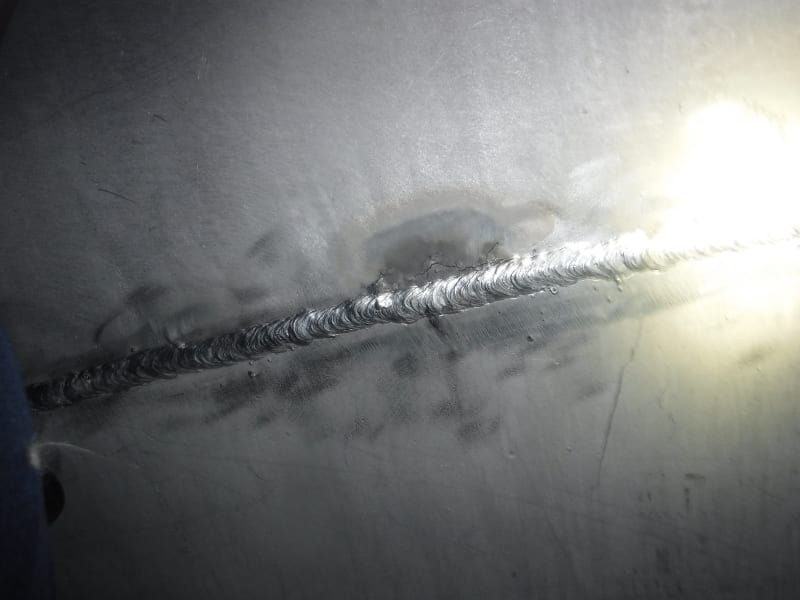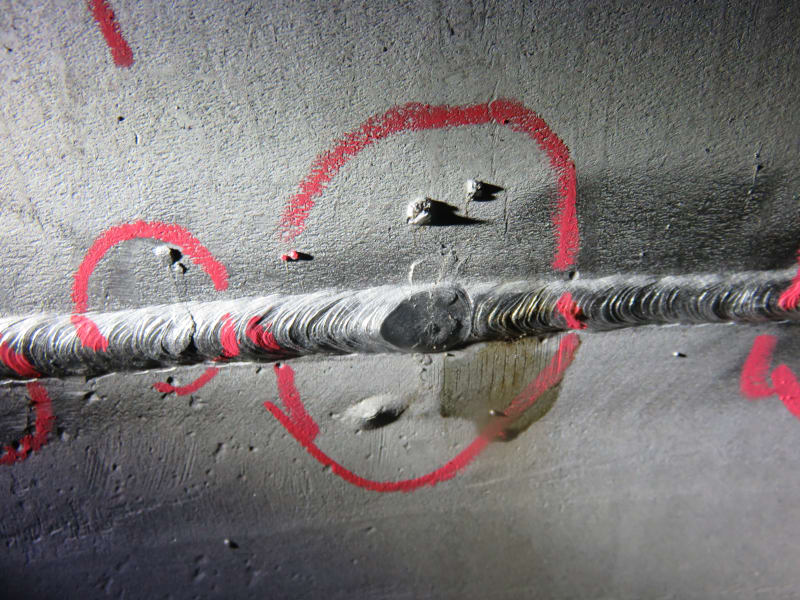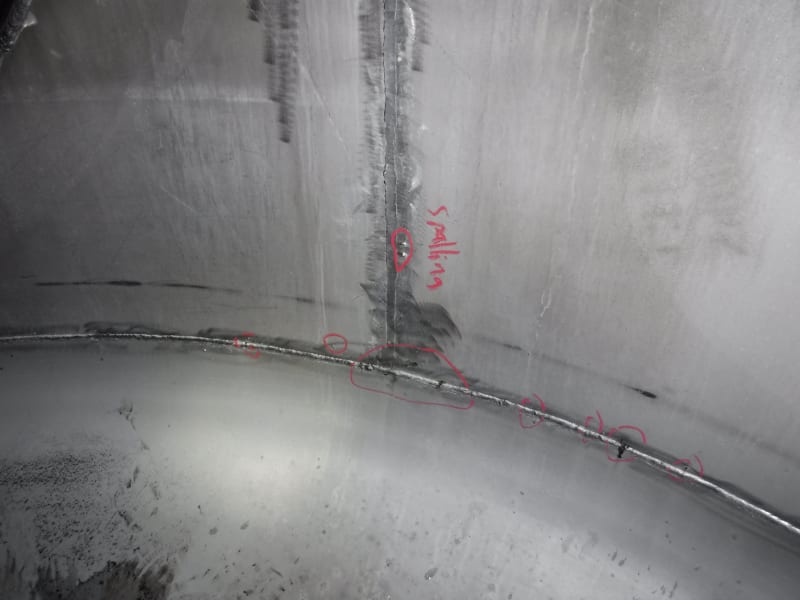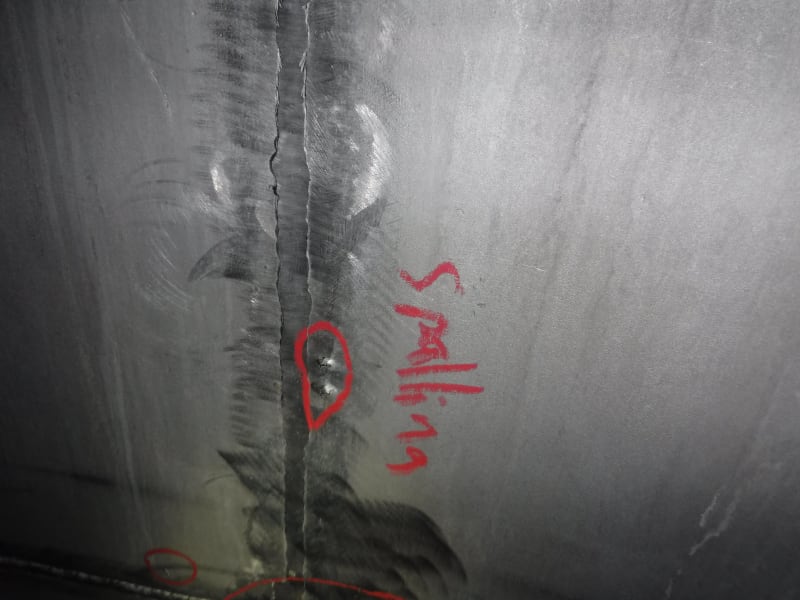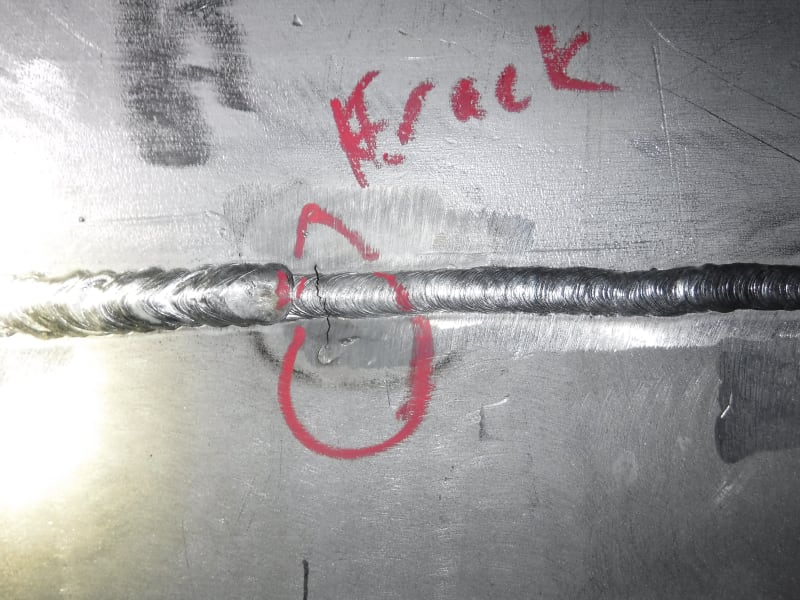RayHam475
Mechanical
- Sep 17, 2020
- 7
What would cause 316 stainless steel to spall? This particular piece of equipment condenses sulfur dioxide vapor into liquid, there are no moving parts and no possibility of impacts. There are several isolated spalled areas/delamination and cracks throughout both in the welds and plate.



